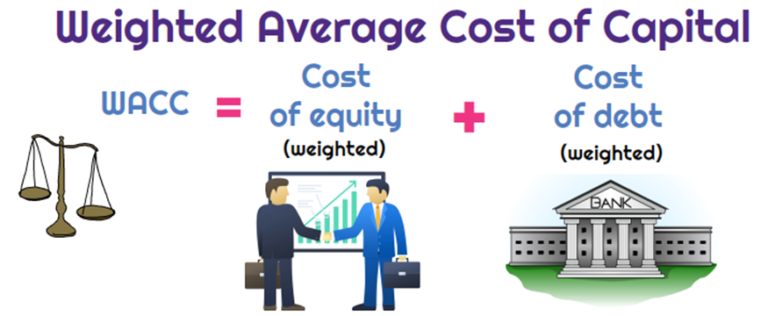
The Secrets of Weighted Average Cost of Capital (WACC)
Investors and finance enthusiasts, let’s delve into the intricate world of finance and explore the Weighted Average Cost of Capital (WACC). This vital metric, often wielded by companies and investors alike, serves as a compass in the complex sea of financial decision-making.
Demystifying WACC:
What is WACC? Weighted Average Cost of Capital (WACC) is the company’s average after-tax cost of capital from all funding sources—be it common stock, preferred stock, bonds, or other forms of debt. In essence, WACC is the average rate a company expects to pay to fuel its business operations.
Why Does It Matter? WACC is not just a financial jargon; it’s a crucial tool. Imagine it as the Swiss Army knife of finance, encompassing the return bondholders and shareholders demand to provide capital. If the company’s stock is volatile or its debt is deemed risky, WACC tends to be higher, reflecting the need for greater returns to entice investors.
Cracking the WACC Code:
Calculation: The WACC calculation involves multiplying the cost of each capital source by its relevant weight in terms of market value and summing up the results. The formula looks like this:
Applications of WACC:
For Corporate Decision-Making: In corporate finance, WACC wears multiple hats. It serves as the discount rate for estimating the net present value of projects or acquisitions. If a company anticipates a return higher than its cost of capital, it’s likely a prudent move; otherwise, reevaluating the capital allocation might be wise.
For Investors: Investors wield WACC as a litmus test for a company’s profitability potential. A lower WACC signals a healthy business, adept at attracting capital at a lower cost. Conversely, a higher WACC suggests higher risk, demanding increased returns for investors.
Behind the Formula:
Cost of Equity: Calculating the cost of equity involves estimating the rate of return that investors demand based on expected stock volatility. The Capital Asset Pricing Model (CAPM) often comes into play, although it relies on historical data, adding a layer of complexity.
Cost of Debt: Determining the cost of debt is comparatively straightforward. It often involves averaging the yield to maturity for outstanding debts. For privately owned companies, credit ratings and relevant spreads over risk-free assets contribute to approximating the return investors demand.
Navigating WACC’s Waters:
WACC vs. Required Rate of Return (RRR): While both WACC and RRR signify return expectations, WACC factors in a company’s capital structure—weighing debt and equity. The interplay between these metrics provides a holistic view of a company’s financial landscape.
Limitations: Despite its prominence, WACC isn’t a silver bullet. Inconsistent reporting practices and the complexity of balance sheets can muddy its waters. WACC should complement other metrics, fostering a comprehensive investment decision-making process.
Putting WACC to the Test:
Example Scenario: Consider XYZ Brands, a hypothetical manufacturer. If its market value comprises $1 million in debt and $4 million in equity, with a cost of equity at 10%, the calculated WACC could be 8.75%. This figure represents the average cost of attracting investors given the company’s financial standing.
Deciphering “Good” WACC:
Determining what constitutes a “good” WACC hinges on factors like company maturity, capital structure, and industry. Benchmarking against sector averages provides a valuable yardstick. For instance, consumer staples might aim for a lower WACC compared to the more dynamic information technology sector.
In Conclusion:
Weighted Average Cost of Capital isn’t merely a numerical entity; it’s a compass guiding financial decisions. As we navigate the realms of finance, understanding WACC’s intricacies empowers investors and companies to make informed, strategic choices in the ever-evolving landscape of capital allocation.
So, let’s continue unraveling the secrets of finance, one formula at a time.
Untill next time,
Santiago
#FinanceDecoded #WACCInsights 📊💡
